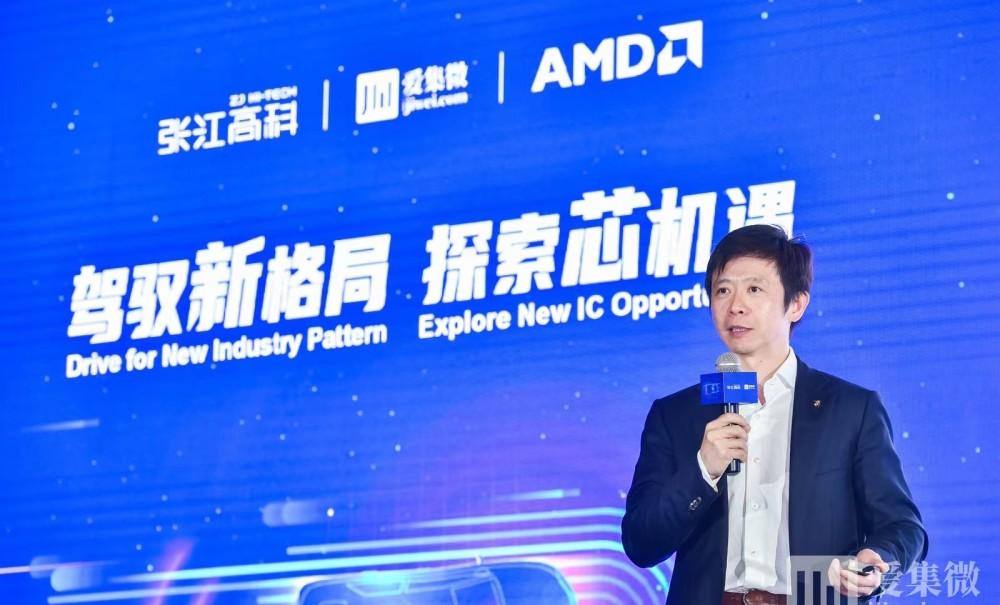
Jiwei Network reported that on December 24, under the guidance of shanghai municipal economic and information commission and Pudong New Area Science and Technology And Economic Commission, the "First Jiwei Automotive Semiconductor Ecological Summit" hosted by China Semiconductor Investment Alliance and undertaken by Zhangjiang Hi-Tech and Aijiwei was officially held in Shanghai. Fang Xiaokun, head of Nezha Automobile Procurement Center, delivered a keynote speech on "Action and Planning under the Chip Crisis".
Nezha Automobile is an automobile brand under United New Energy Automobile Co., Ltd., and its parent company, United New Energy, was founded in 2014, adhering to the development concept of "electrification, intelligence and networking", so that intelligent electric vehicles with high product-price ratios are within reach.
The chip crisis continues to have an impact
Fang Xiaokun sorted out the car and related technical parts, he said, a vehicle basically contains 100-120 procurement modules, can be divided into electronic and electrical, chassis, intelligent cockpit, three electric these major areas. These modules suffer from missing cores, and even the seat controller and some of the simpler Tier-1 parts are missing. The chassis and the smart cockpit screen are the hardest hit areas, like EPS, ESC are related to the automatic safety of the chassis, and there are also uncontrollable and high-risk factors of the chip. A vehicle needs about 100 parts, and the lack of cores also affects the entire parts supply chain, and power devices such as IGBT and MOSFETs face unprecedented challenges in the three electrics. He pointed out that the most serious lack of core this year is the MCU, and in the next year, high-computing chips and high-end platforms will also face risks.
How to deal with the chip crisis?
The lack of core turmoil has continued to affect automakers for a whole year, and next year's impact may continue, and major car companies have also begun to establish coping strategies. The practice of Nezha Automobile is to establish a direct chip procurement mechanism internally, and at the same time adopt a targeted management model in terms of organizational structure, information management and decision-making process. In terms of specific practices, led by the supply chain, the main engine factory directly purchases chips, the special person is responsible for the cross-departmental system, the high-level authorization reports real-time decision-making in real time, and the BOM list control table of all risky parts is established. The chips purchased by Nezha Automobile this year come from 42 different brands, of which the first three account for 60%, and the monthly direct purchase amount shows an upward trend.
Fang Xiaokun pointed out that under the chip crisis, the relationship between OEMs and suppliers, as well as the docking window, are also undergoing many changes. In the past, procurement was mainly docked with sales, but now it is directly docked with supplier procurement, directly docked with supplier logistics, and even directly docked with warehouses, so as to obtain first-hand information and take decisions. In addition to the initiatives led by procurement, there is also a rapid response internally.
In terms of research and development, if it is a chip that is about to be eliminated, it is very challenging for research and development, because any program involves long-term development and design and verification, and Nezha Automobile has made a lot of extra efforts, on the one hand, to ensure supply, on the other hand, to control risks. In terms of quality and production, after the use of new chips, many of the aging tests and oscillation tests of the car specification level must be done again, and Nezha Automobile has also made the greatest efforts and cooperation. Finally, there is the financial aspect, where there is a seamless fit and connection between finance and procurement.
Fang Xiaokun stressed that the lack of core in the car next year is still not optimistic, and the overall goal of Nezha Automobile is to establish a chip supply chain management mechanism with controllable risks, especially controllable costs.
Finally, Fang Xiaokun introduced the progress of this year's business and next year's planning. He said that in terms of intelligent driving and intelligent cockpit, it will continue to deepen in-depth cooperation with some first-line enterprises, and this year and Horizon have established strategic cooperation in vehicle-level high-computing chip; and Huawei has established comprehensive cooperation in the intelligent ecosystem and intelligent cockpit, and next year Nezha S will adopt Huawei's solutions; and SenseTime has also launched many cooperation this year.
According to the data previously released by Nezha Automobile, in October 2021, Nezha Automobile delivered 8107 units, an increase of 294% year-on-year, breaking through the 8000 unit mark for the first time, setting a record for delivery for 9 consecutive months, and ranking second in the new car-making force. In the past 10 months, Nezha Automobile has delivered 49,534 units, an increase of 398% year-on-year. Up to now, the total delivery volume of Nezha Automobile has exceeded 70,000 units, reaching 75,837 units.
For next year's planning, Nezha Automobile hopes to continue to carry out in-depth dialogue with chip factories, industry leaders and partners. Specifically, Nezha Automobile will continue to optimize the digital transparent supply chain with Tier 1; internal research and development to promote the rapid implementation of new solutions; and strengthen more dialogue and contact with the ecosystem. (Proofreading/Jimmy)